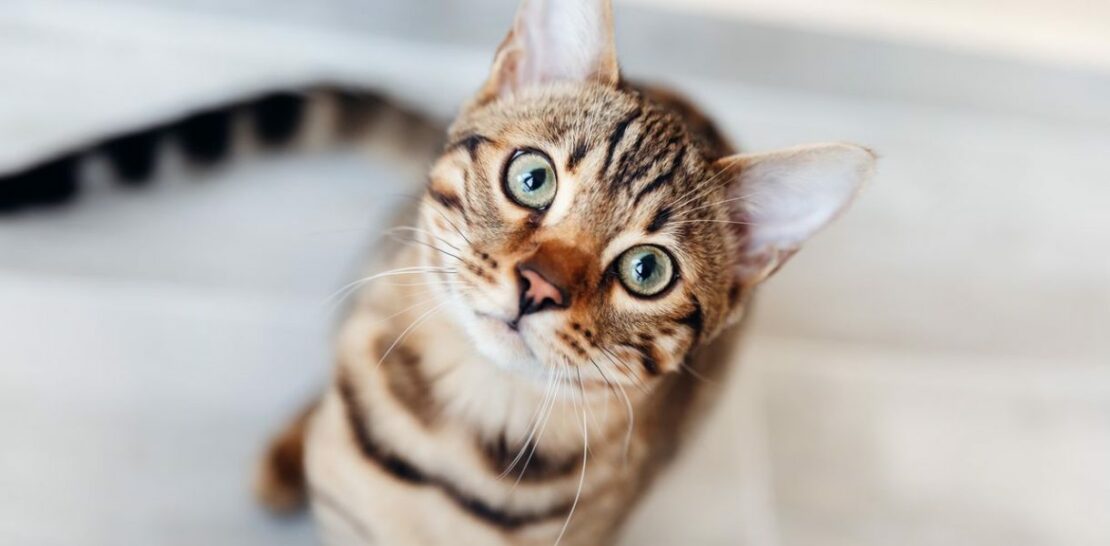Are you captivated by the wild beauty of leopards and other big cats, but hesitant about adopting a mini leopard as a domestic pet?
Look no further than the Bengal cat!
This remarkably stunning breed offers the best of both worlds – the striking appearance of a wild feline combined with the loving nature of a typical house cat.
In this comprehensive guide, we will delve into everything you need to know about Bengal cats, from their origin and physical characteristics to temperament and health concerns, as well as tips for proper care and maintenance.
Read on to discover the wonders of this fascinating breed and decide if the Bengal cat is the perfect addition to your family.
Unraveling the Origins of the Bengal Cat: A Unique Blend of Wild and Domestic
Understanding the Bengal cat’s history is essential in appreciating its distinctive features and temperament. Bengal cats are not your ordinary feline breed; they are a unique hybrid that can be traced back to the 1970s, when an experimental breeding program began in the United States.
The story of the Bengal cat starts with the Asian Leopard Cat (ALC), a small wild species of feline found throughout Asia. The ALC is known for its attractive coat pattern and its shy, elusive nature. The initial goal of the breeding program was to create a domestic cat with the mesmerizing appearance of the ALC while maintaining a friendly and social disposition.
The first successful mating occurred in 1963 between a female ALC and a domestic male cat, resulting in a litter of hybrid kittens. The kittens inherited the striking coat patterns of their wild ancestors and the sociable nature of their domestic parent. Through a series of selective breeding processes involving various domestic breeds such as the Egyptian Mau, Abyssinian, and American Shorthair, the Bengal cat we know and love today was born.
Remarkable Physical Characteristics: A Closer Look at the Bengal Cat’s Appearance
One of the most alluring aspects of the Bengal cat is its appearance. This breed boasts a unique combination of physical traits that truly set it apart from other domestic cats. The following are some of the most notable characteristics of Bengal cats:
- Coat Pattern: Bengal cats are best known for their beautiful and distinctive coat patterns. They come in two primary pattern types: the marbled pattern, featuring flowing swirls and bold markings, and the spotted/rosetted pattern, characterized by spots or circular clusters of color. These patterns can appear in various colors, including brown, silver, snow, and blue.
- Coat Texture: Another unique feature of the Bengal cat is its coat texture. The fur is unusually soft and plush, giving it a luxurious feel. This is due to the presence of a protein called agouti in the hair shafts, which is also found in the fur of wild felines.
- Size and Build: Bengal cats are medium to large-sized felines, with muscular and athletic builds. Males typically weigh between 10-15 pounds, while females are slightly smaller, weighing between 8-12 pounds. They have long, sturdy legs and large, rounded paws, giving them a powerful appearance.
- Facial Features: The Bengal cat’s face displays a combination of wild and domestic features. They have prominent cheekbones, large almond-shaped eyes, and a broad nose. Their ears are medium-sized and rounded at the tips, with a slight forward tilt.
Temperament and Personality: What to Expect from a Bengal Cat
The Bengal cat is not just a pretty face; this breed also possesses a captivating personality. While Bengals are known for their wild appearance, their temperament is anything but. They are intelligent, social, and energetic creatures that make wonderful companions and family pets.
- Intelligence: Bengal cats are among the most intelligent feline breeds. They are quick learners and can often be taught tricks, such as fetching or performing high jumps. Their curiosity and problem-solving abilities make them excellent escape artists, so it’s crucial to keep your home Bengal-proof!
- Sociability: Unlike their wild ancestors, Bengal cats are very social creatures. They enjoy being around people and often form strong bonds with their human family members. They may even befriend other pets, such as dogs, if introduced properly. However, keep in mind that every individual cat’s personality may vary, and some Bengals maybe more independent or reserved than others.
- Energy Level: Bengal cats are known for their high energy and playful nature. They love to explore, climb, and engage in interactive play with their human family. Providing them with plenty of toys, cat trees, and scratching posts is essential to keep them stimulated and entertained. Regular playtime and exercise will help maintain their physical and mental well-being while also creating a strong bond between you and your Bengal cat.
- Vocalization: Many Bengal cats are quite vocal and may communicate with their human family members through a variety of meows, chirps, and other vocalizations. They may “talk” to you to express their needs, desires, or simply to engage in conversation. This chatty behavior is an endearing trait that many Bengal cat owners find delightful.
Caring for Your Bengal Cat: Health, Nutrition, and Grooming
As a responsible Bengal cat owner, it’s important to understand the specific care requirements of this unique breed. Proper care and maintenance will help ensure that your Bengal cat lives a long, happy, and healthy life. Here are some essential aspects of Bengal cat care to consider:
Health Concerns: While Bengal cats are generally healthy, they can be prone to certain health issues. Some of the most common health concerns in this breed include hypertrophic cardiomyopathy (HCM), which is a heart condition; progressive retinal atrophy (PRA), a degenerative eye disorder; and pyruvate kinase deficiency (PKD), a metabolic disorder. Regular veterinary check-ups are essential to monitor and address any potential health issues early on.
Nutrition: Providing your Bengal cat with a balanced diet is crucial for their overall health and well-being. It is recommended to feed them a high-quality, grain-free cat food that is rich in protein, as this closely resembles their natural diet in the wild. Be sure to consult with your veterinarian to determine the appropriate food and portion sizes for your Bengal cat based on their age, weight, and activity level.
Grooming: Despite their luxurious coat, Bengal cats are relatively low-maintenance when it comes to grooming. Their short, plush fur does not mat or tangle easily, making them a breeze to care for. Weekly brushing with a soft-bristle brush or grooming glove is usually sufficient to keep their coat healthy and free of loose hairs. Additionally, regular nail trimming, ear cleaning, and dental care are important aspects of their grooming routine.
Choosing the Right Bengal Cat for You: Breeders, Adoption, and Compatibility
Once you have decided that a Bengal cat is the right fit for your family, it’s essential to take the appropriate steps to find the perfect one for you. There are several factors to consider when choosing a Bengal cat, including whether to purchase from a breeder or adopt from a rescue organization, as well as assessing compatibility with your household and lifestyle.
Breeders vs. Adoption: There are reputable Bengal cat breeders who are dedicated to producing healthy, well-socialized kittens. When selecting a breeder, be sure to research their background, ask for references, and visit their facilities to ensure they are maintaining high standards of care for their cats and kittens. Alternatively, you may consider adopting a Bengal cat from a rescue organization or shelter. Many Bengal cats in need of loving homes have been surrendered due to changes in their owners’ circumstances or because of a lack of understanding about the breed’s unique needs. Adopting a Bengal cat can be a rewarding experience, providing a loving home to a cat in need while also giving you the opportunity to learn more about their personality and history.
Compatibility: Before bringing a Bengal cat into your home, it’s important to assess whether this breed is compatible with your household and lifestyle. Bengal cats are best suited for families who can provide them with plenty of attention, stimulation, and playtime. They may not be the ideal choice for households with very young children or individuals with allergies, as their high-energy nature and shedding can pose challenges. Additionally, consider whether your living situation allows for the Bengal cat’s climbing and exploring tendencies, as well as their potential vocalizations.
In conclusion, the Bengal cat is an undeniably enchanting and unique feline breed that captures the hearts of many with its wild appearance and endearing personality. By understanding their history, characteristics, temperament, and care requirements, you can make an informed decision about whether the Bengal cat is the right addition to your family. With proper care, love, and attention, the Bengal cat can make a truly wonderful companion that will bring joy and fascinationinto your life for years to come. So, if you’re ready to welcome this exotic and captivating breed into your home, embark on the exciting journey of Bengal cat ownership and prepare to be enchanted by their beauty, intelligence, and unmatched charm.




